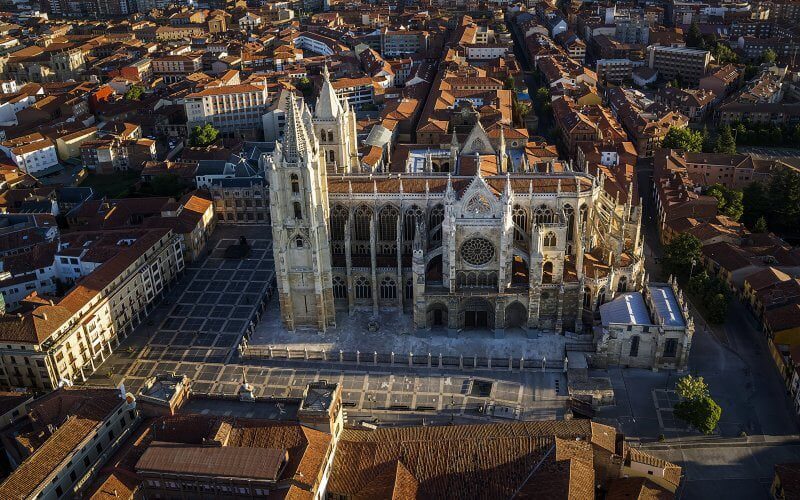Leon is one of the most interesting and amazing cities in Spain. It combines picturesque nature, colorful Spanish cuisine and, of course, a rich historical heritage preserved in various attractions. Leon has become a source of pride not only for local residents, but also for all Spaniards, because it is the birthplace of the Spanish language, an important point on the way of pilgrims to Santiago de Compostela. Modern Leon is a city of students who come here to get an education at one of the best universities, as well as gourmets — culinary tours are very popular.
Interesting fact! The city has so many attractions, temples, and fortresses that the UNESCO World Heritage List includes not individual buildings, but neighborhoods.
Historical excursion
The city of Leon in Spain is the capital of the region of the same name, located near the Cantabrian Mountains in northern Spain. The population is approximately 136 thousand people. In addition to the official language (Spanish), residents also use the dialect “leones”.
The first historical mention of the city of Leon in Spain dates back to 70 BC. e. At this time, the Roman Legion was stationed here, the task of soldiers was to protect the territory and peoples living in the Alps, and control the operation of mines.
Interesting fact! The name Leon is derived from the word “legion”.
Leon in Spain for a long time was a tasty morsel for many conquerors. In 540, the Visigoths settled here, in 717 — the Moors, but three decades later Leon was annexed to Asturias. From the former greatness and presence of the Roman Legion, only individual fragments of the fortress, the column where storks nest, remain.
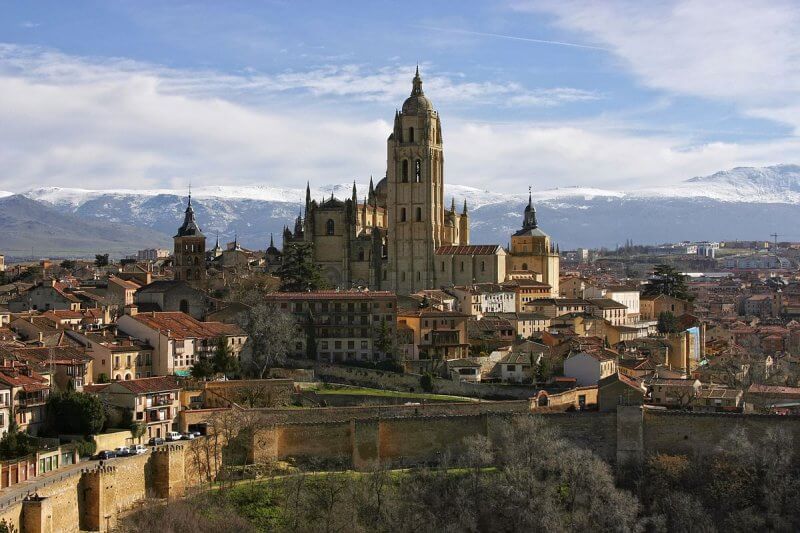
Modern Leon
The city has preserved the old rectangular layout, which was founded by soldiers of the legion. In addition to a huge number of attractions, the famous university in the city has hosted chess tournaments since 1987, and the leading Spanish handball club — “Adhemar Leon”, men’s and women’s basketball teams are also based here.
Interesting fact! The annual flow of tourists is 1 million people.
City of Leon in facts:
- Location: north-west of Spain;
- León on the map: Province of León;
- administrative divisions: 39 districts;
- Population: Spanish, immigrants from northern Africa;
- Religion: Catholicism;
- Local currency: euro;
- water bodies: Torio and Bernesga rivers;
- air terminal: Leon (accepts international flights);
- city area: 39.03 km2;
- population: 136 thousand people;
- altitude above sea level: minimum-800 m, maximum-944 m;
- distance from Madrid: 330 km.
Useful to know! The climate in the city is subtropical and Mediterranean, depending on the altitude above sea level. The average winter temperature is +3.2°C, the average summer temperature is +19.8°C. The average annual precipitation is 515 mm.
Attractions
Of course, the most interesting sights are located in the historical part of the city. Previously, Leon was the capital of a kingdom with the same name, since then this part of the city has retained its former greatness.
The historical part is surrounded by fortified walls that have been standing here for hundreds of years, behind them are the walls of the Gothic-style cathedral, decorated with unusual stained glass windows, the Church of St. Isidore, where unique frescoes have been preserved. And on the banks of the Duero preserved landmark in the Renaissance style, where today the hotel is located, and before it was a monastery.
Cathedral of Leon
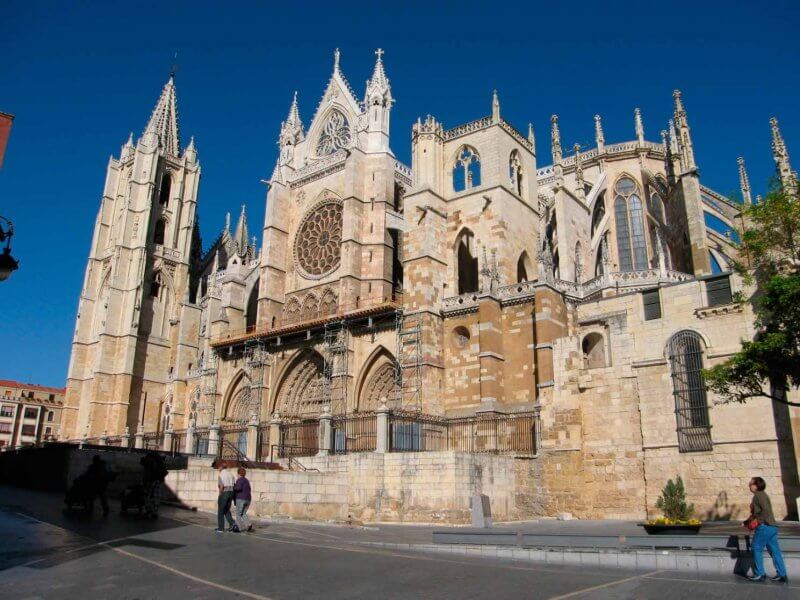
The cathedral in the Gothic style is recognized as the pearl of architecture in the northern part of Spain. This is the main attraction of Leon in Spain, where stone and light are harmoniously intertwined. Inside is the largest collection of stained glass windows not only in Leon, but also in Spain, with a total area of 1800 m2. They are arranged in three tiers.
Interesting fact! The cathedral was built on the site of a Romanesque church, even using materials left over from it.
The idea of building a religious shrine belongs to the monarch Ordogno II, who thus perpetuated the victory over the Moors. Construction work was carried out from 1205 to 1301. Masters from France, Spain and Holland worked on the project. The facade is 90 m long and 30 m wide. From the height, the shape of the cathedral resembles a cross. The cathedral has a passageway beyond the altar, through which pilgrims pass on their way to Santiago.
The structure is complemented by two towers — North and South with a height of 68 m each. The main entrance is located in the western part, decorated with scenes of the Last Judgment. The altar was created by a group of craftsmen, and there are five chapels nearby. One has a figure of the Virgin Mary installed in it. In addition, the cathedral contains the tombs of the monarch Leon Ordogno II, Saint Froilan, bishop of the period of the XIII century.
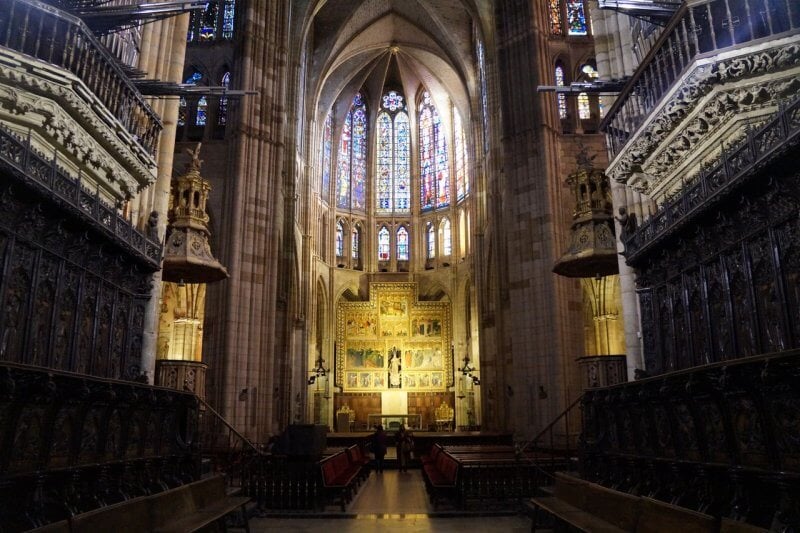
In the northern part of the attraction there is a basilica, where services are still held today.
Useful to know! The cathedral is built of sandstone, which is destroyed over time, so today many parts of the building have been replaced.
- The cathedral is open from 9-30 to 13-30, and then from 16-00 to 19-00.
- Entrance fee — 6€.
St. Isidore’s Basilica
The landmark is built on the site of a Roman temple. Earlier (10th century), the Church of St. John the Baptist was built here. Then, during the Arab conquest, it was destroyed, and in 1063 the basilica was rebuilt and consecrated in honor of Isidore of Seville, the famous Spanish scholar and theologian of the Visigothic period. It is noteworthy that the Muslim ruler allowed Isidore, who was a Christian during his lifetime, to be buried in Leon. Within the walls of the basilica lie the remains of many monarchs of Spain.
The building is designed in Romanesque style, but some parts are decorated in the Gothic style. Connoisseurs of architecture will also find Renaissance details, even Arabic details in the facade design. The most famous values of the Basilica:
- carved tympanum, it was built before 1100;
- The Royal Pantheon is a chapel where the remains of monarchs are buried.
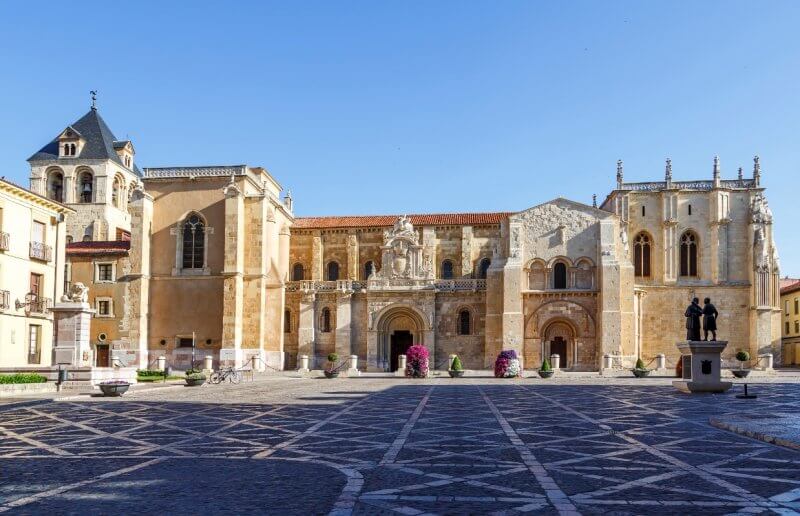
Interesting fact! The equestrian statue of Isidore stands out among the sculptural compositions on the facade.
The basilica has a museum where you can view art from the early Middle Ages, and the library houses more than three hundred manuscripts, and the” highlight ” of the collection is the Bible of the 10th century.
- The ticket costs 5€.
- Please check your work schedule on the official website: https://www.museosanisidorodeleon.com/horario-de-visita
Gaudi’s House
Casa de los Botines is an amazing modernist building that appeared in Leon thanks to the famous master Antoni Gaudi. Today, the Caja Espanya Bank is located here, but tourists can also visit the museum.
The history of the house is as follows: after seeing Gaudi’s creation in Astorga (Bishop’s palace), Eusebi Guell (a friend of the master) recommended designing a house in the heart of Leon. Later, the Guell factory was bought by Simon Fernandez and Mariano Andres, who commissioned Gaudi to build a house in the city. At the beginning of the 20th century, the building was purchased by the bank “Caja España”, while the original architecture of the building remained intact.
When creating the project, Gaudi thought that the landmark would fit harmoniously into the city landscape, which is why the building is decorated in a medieval style, but there are elements of neo-Gothic. The house has four floors, as well as an attic, basement. The roof is sloped, and towers are built in the corners. The moat around the building is used for ventilation, as well as lighting the ground floor.
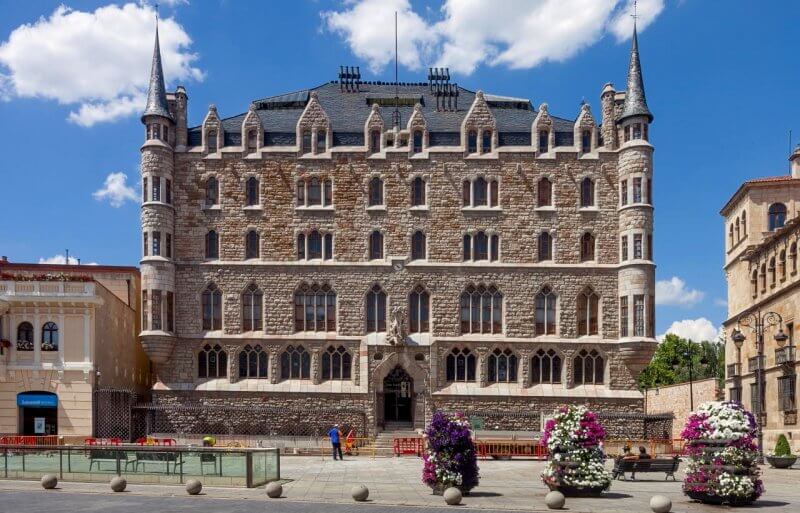
On the second floor there were living quarters, two separate entrances were organized for them. The rooms on the upper floors were rented out, but the rooms on the first floor were decorated as offices.
Interesting fact! In the middle of the last century, under the sculpture of a dragon that decorated the main entrance, drawings of the building were discovered, signed by Gaudi himself.
- The ticket price is 5€ or 8€.
- The opening hours of the museum and the museum shop are the same-daily from 11: 00 to 14: 00 and from 16: 00 to 20: 00.
- All detailed information is available on the official website: https://www.casabotines.es.
San Marcos Monastery
The Convent of St. Mark is one of the main religious shrines of the Renaissance and is undoubtedly one of the main attractions of Leon. Every year, pilgrims must stop here on their way to Santiago de Compostela. Today, the building houses a luxury hotel.
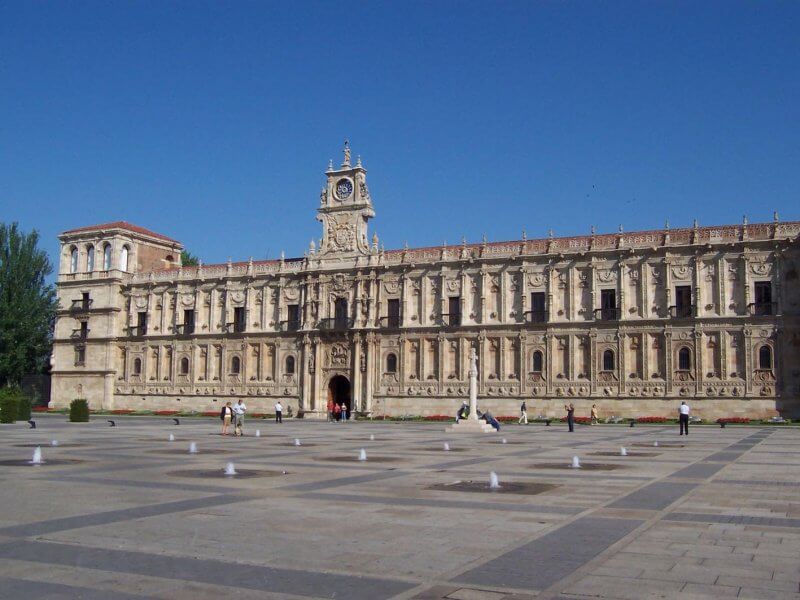
The history of the monastery dates back to the 16th century, earlier there was a shelter for tired pilgrims in its place, but when the building fell into disrepair, it was decided to build a new one. The decree was issued by the monarch Ferdinand at the beginning of the 16th century. Construction work was completed in 1537, although the finishing work was carried out for several more years. Then the building was finalized, individual elements were completed — part of the gallery, the main staircase, and another wall. The building resembles a palace complex. Its 100-meter-long facade is designed in the Plateresco style – a Spanish Renaissance.
Originally there was a hospital, and the monastery here appeared in the early 16th century. It should be noted that the building was not used as a monastery for long. In different years, there was a prison, then a veterinary clinic and a faculty of the University of Leon.
Interesting fact! In the period from 1936 to 1940, the monastery building was a real concentration camp, where more than 7 thousand men and 3 hundred women were held.
Today, the building has been converted into a luxury hotel, and the Archaeological Museum and the City Museum are located in one building.
Location: San Marcos Square.
San Martin Square
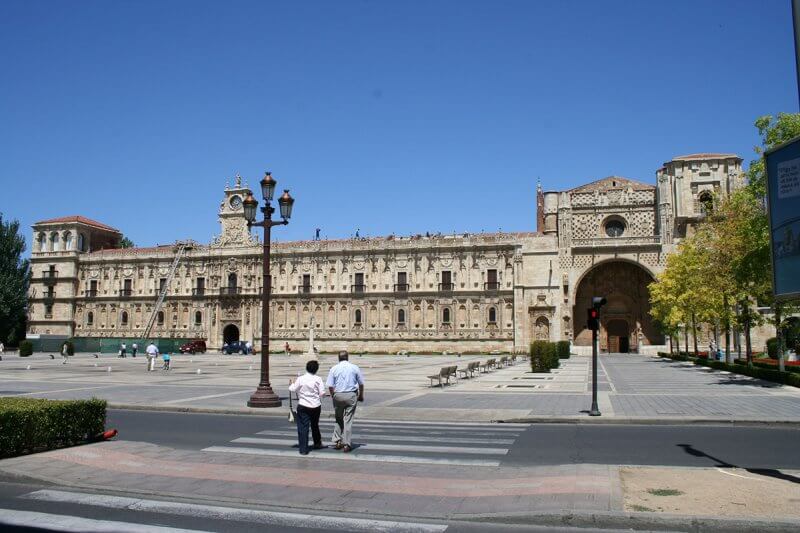
Seven narrow streets lead to the square. A huge number of cafes and restaurants are located here, guests are offered a glass of wine, and for a snack — small snack sandwiches with dried meat, vegetables, fish or black pudding. In the evenings, the square is filled with tables and chairs, and hundreds of tourists and locals flock to the square. But during the day, a fair of handicrafts and agricultural products is held here.
In June, festivities are held on the square in honor of the San Juan holiday (similar to Ivan Kupala), young people gather and sing. Dancing and having fun all night.
Accommodation in Leon
If you think of the city in a simplified way, it looks like this. The train station and bus station are located on the opposite bank from the historical center. The cathedral is located a quarter of an hour from the train station, and most hotels are built around it (many are located in old buildings). If you want to stay in a more modern area and hotel, head south to the El Corte Ingles shopping center (Velasquez Street). Another area of interest for tourists is located in the north-western part of Leon.
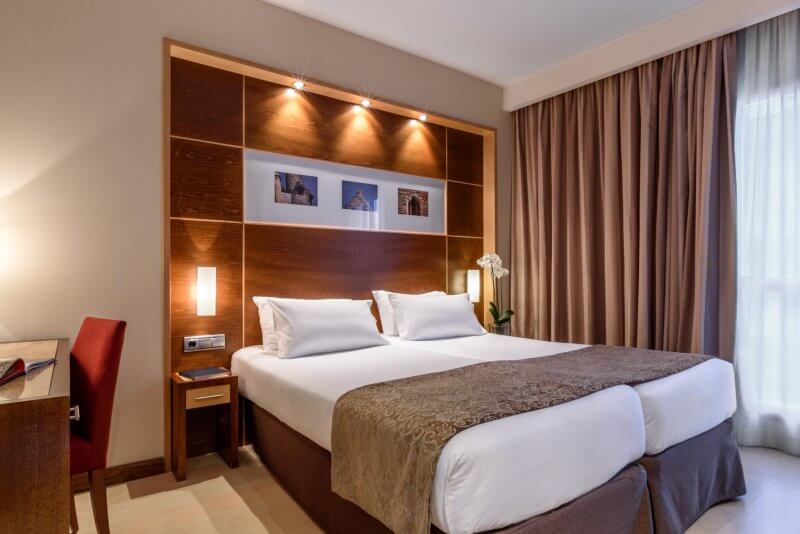
If your goal is to explore the sights of Castile and Leon, or go hiking, then choose hotels in the historical part of the city. If you plan to explore not only Leon, but also the suburbs, it makes sense to stay in a hotel closer to the train station. If the decisive factor is the cost of the hotel — pay attention to hostels.
Important! Since Leon is located on the Way of Saint James, during the annual pilgrimage, a huge number of pilgrims come here and there may be problems with booking accommodation.
- The most affordable accommodation in the city starts from 28€ — a room in a hostel or guest house,
- hotel accommodation starts from 35€ (3-star category),
- a 4-star hotel room starts from 42€.
For a large company, the best option is to rent a house.
How to get to Leon
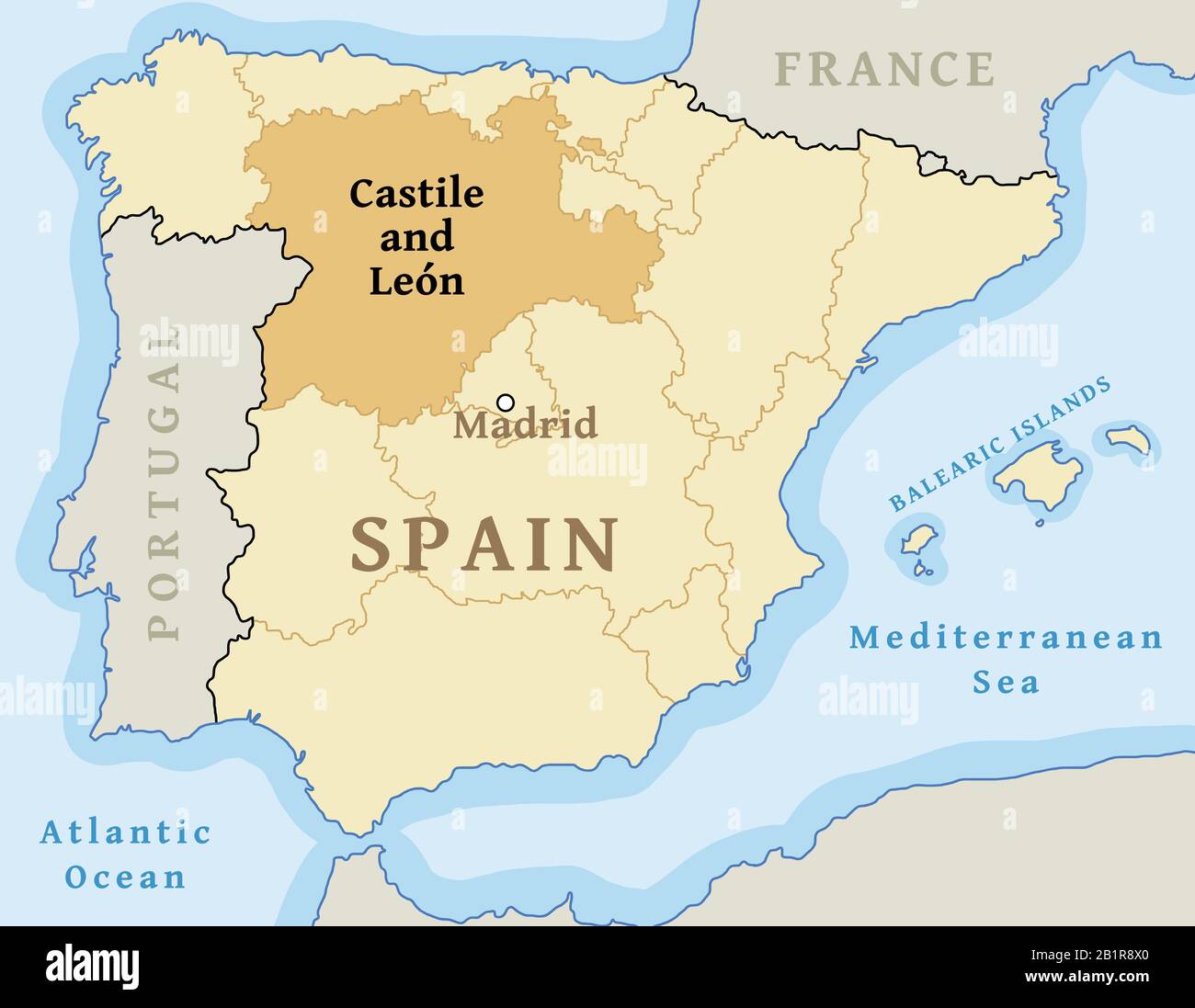
An experienced traveler will notice that Leon on the map of Spain occupies a comfortable geographical location, there are major transport routes connecting many Spanish cities. Leon is easily accessible via the A — 66, A-6, and A-231 expressways. The trip will require about 17 liters of gasoline.
Railway communication occupies a leading place in the transport system of Spain. Two train companies run between the cities: Adif and Feve. Today, these carriers are united by a single service center. Flights are provided from many Spanish cities.
Useful to know! Between Madrid and Leon, there is a high-speed line, the road takes a little more than two hours.
Tickets are sold at the ticket offices of the railway station, as well as on the official website: www.renfe.es Station address: Astogra Street. Opening hours: around the clock. Tickets cost from 14€ to 45€.
Another way to get to Leon is by bus. The bus station is located at Engineer Saenz de Miera Avenue. The main carrier company is ALSA. Public transport goes to most cities in Spain.
Tickets are sold at the box office, as well as on the official website: www.alsa.es. Tickets cost from 15€ to 25€.
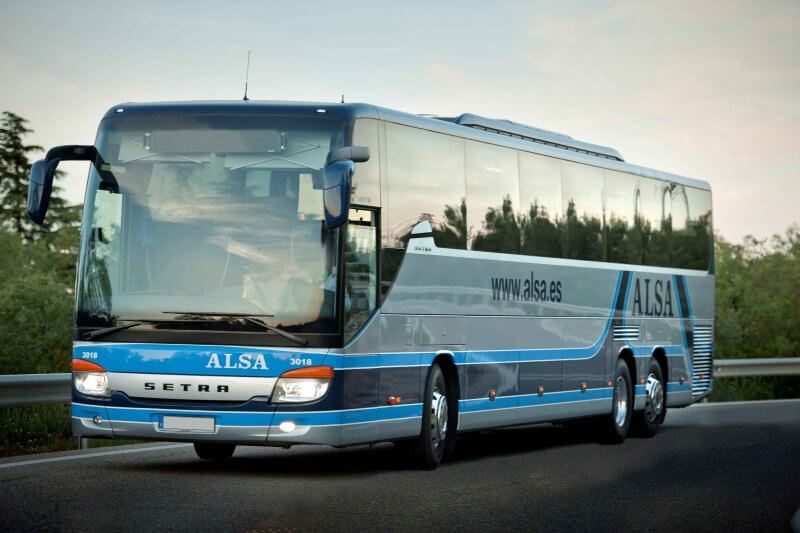
There is an airport in Leon that accepts international and domestic flights. From here you can fly to Madrid, Barcelona, in the summer there are flights to other resort cities in Spain.
Interesting facts and recommendations
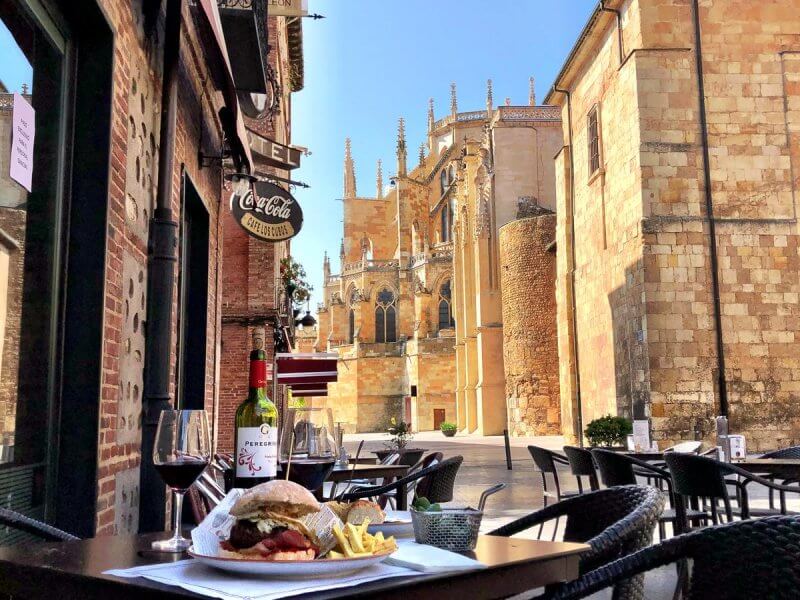
- The Leonese dialect, which was the official language of the Kingdom of Leona, is still preserved in Leon and Castile, and is occasionally heard in Portugal. The language is ancient, has Latin roots, and the authorities of Leon are developing it in every possible way. Leonese Language Day is celebrated every year on June 10.
- Especially in winter, the climate in Leon is fickle and changeable, with snow falling for several weeks at a time.
- Be sure to check out Saint Marcelo Square, which is also home to shopping malls.
- Entertainment options can be found in the old Barrio Humedo quarter, many of them located in old buildings.
- The city is associated with a fascinating legend about the Holy Martyr Marcellus, who is the patron saint of the city. Saint Marcellus was born and lived all his life in Leon and served as a centurion of the Roman Legion. According to legend, in the summer of 298, Marcellus openly declared his commitment to Christianity, while the man said that he worships the one God. Marcellus was then exiled to Tangier, where he was tried and executed. The same fate awaited his wife and 12 sons.
- In the city center there is an Exhibition hall where renewable energy sources of the city are presented. We are talking about alternative solutions in the field of energy efficiency. The devices that make up the exhibition generate enough energy to supply electricity to 1,100 local residents.
- Leon is the birthplace of Moses of Leon, a Medieval philosopher and writer who wrote the Zohar, the most famous book in the field of Kabbalah.
- The busiest streets of Leon are Ordoño II, El Burgo Nuevo and Calle Ancha. Here are the most visited restaurants, discos, shops, large shopping centers. Fans of shopping come here, because here you can find pavilions of different themes and with various goods. And in the shops of Leon there is a large selection of fruits and delicacies.
- Cuevas de Valporquero caves are located in the suburbs of Leon, where wine cellars are now open.
- The city regularly hosts ancient holidays, festivals, celebrations, participation in which will allow you to better learn the traditions of the country and the city. By the way, the festive processions in Leon are rightfully considered the brightest and best in Spain.
Now you know where the city of Leon is located, and you can enjoy the exterior and interior decoration of the Spanish cathedral itself and the beauty of other attractions, take part in a cooking class, find a stork’s nest hidden in an ancient column built during the reign of the Roman Legion.
Leon is a city that is great for exploring historical sights, connoisseurs of gastronomic delights. The region is known for its magnificent vineyards and excellent wine varieties. There is also a large selection of excursions and leisure activities in the city.
Fuengirola City in Spain: A Resort with a Centuries-Old History

